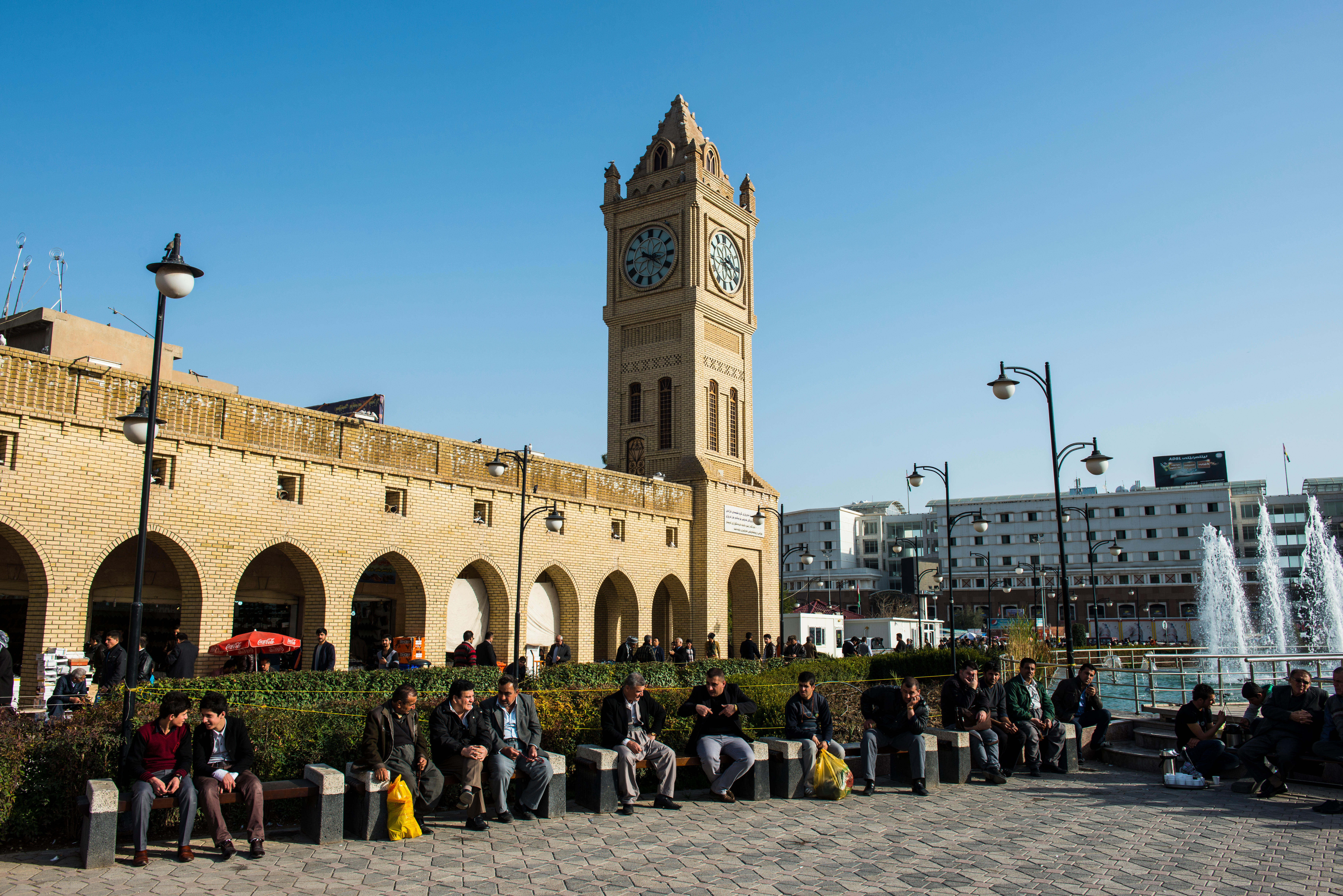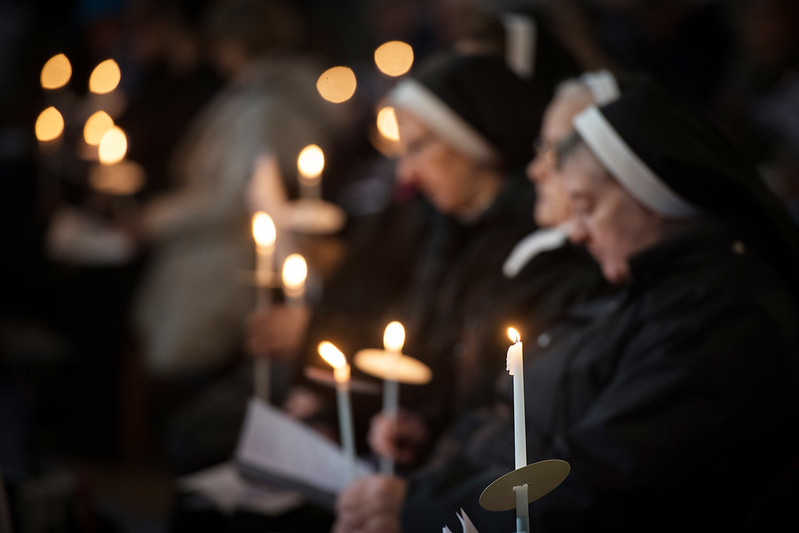Candlemas is for some the final feast of the Christmas period and then the calendar moves onwards to Ash Wednesday but before we look too far forward to the lengthening of the days in Lent, it might be good to ponder the role that darkness plays in all of the Gospels. The key events of Jesus’ life that are placed within darkness link to the universal experience of being human whilst the events that are set in light tell a specific story of covenant and discipleship. The stories set in the dark, birth, suffering and death may be an initial springboard to help anyone connect their own life journey with the life of Jesus. These stories are therefore a great treasure for evangelism.
Both Matthew and Luke set the majority of their infancy narratives at night time and the focus of their stories is the birth of Jesus. Night time is a time of activity: of the five dreams in Matthew’s opening chapters, twice Joseph is told to get up after his dream and once we are told he woke up and did what the angel had commanded. These dreams happen when Joseph is asleep and we can assume this is during the night. With greater certainty we know that the Magi appear after following a star in the night sky and it is the movement of the star at night that leads them first to Herod and then to Bethlehem. Similarly in Luke’s gospel account the shepherds appear in the night time after angels have visited them. We don’t know the hour that Mary gave birth but the revelation of Jesus to both Jews and Gentiles is firmly placed in the night time. The revelation of God’s desire and design through the dreams of Joseph and the Magi is a night time activity. Freud said that the interpretation of dreams is the royal road to the unconscious activities of the mind: perhaps paying attention to this universal activity should not only be left to psychoanalysts, for people of faith have a great heritage in taking dreams seriously.
The Cross is not only a place of emotional darkness but physical darkness too. All three synoptic gospel writers note that there was darkness from the sixth hour (midday) until the ninth hour. The time of Jesus’ greatest suffering is in darkness culminating in his death three hours later. It is a time as Luke tells us “when the sun’s light failed”. Perhaps we take this as metaphorical because much art through the centuries needs light to illuminate the scene but imagine the women standing at the Cross in the confusing darkness of an eclipse, or the person lifting up a sponge of hyssop aiming for Jesus’ face; the repentant thief making his declaration without seeing Jesus clearly next to him. Suffering often feels like a dark place emotionally and for many night time is difficult when there is illness or impending death, The hours drag by; sleep is not possible; there may be a sense of being alone, of exhaustion. Jesus’ final hours occur when the sun should be at its highest but as the life of the son of God is eclipsed so the natural world echoes the tragedy. Jesus’ emotional turmoil in the Garden of Gethsamene and his physical suffering at Calvary are places that have a natural resonance for many who are undergoing similar experiences.
When we are in a place of physical or metaphorical darkness it can be hard to see that darkness is also a place of change. A dark place in the natural world is a place of growth; bulbs wait in the dark soil before warmth draws them to life and to colour. Following the rules of nature it is unsurprising that resurrection is recounted as happening either in darkness or in the half light of dawn. Yet often we think of the light rather than the darkness of an Easter morning. John has Mary Magdalene arrive at the tomb whilst it is still dark and Jesus has already risen. Luke mentions that at the first sight of dawn the women approach the tomb and find the stone already rolled away. Matthew says it is towards dawn and Mark is the evangelist who brings light to the resurrection story; “Very early in the morning, when the sun had risen” or “just as the sun was rising”, but in all these accounts Jesus is already alive. Darkness has allowed the old order to be buried and the newness of life to flourish.
These events of birth, death and resurrection are universal themes: the death of Jesus and his rising to new life are a specific part of God’s salvific plan but we will all experience birth and death and the majority of people will have thoughts or a conversation, often near to the end of their life, about whether there is anything beyond death.
The backdrop of darkness in stories connects us to the universal experience of being human. They complement the stories of light; baptism, transfiguration and conversion which are about our response of discipleship and being Church. Not everyone will have a personal experience that links to the stories of light; they are far more likely to connect with the stories placed in darkness. And so the stories of darkness are ways to connect with people who do not know the Scriptures. The people in the stories of darkness are witnesses who we seldom hear of again. No mention of shepherds, wise men, the Roman centurion, the various lists of women at the foot of the Cross or the women who witness the resurrection. Apart from Our Lady, they do not figure in the Acts of the Apostles or the biblical history of the early Church. The figures in these stories are witnesses but they are not noted evangelists. Many people are witnesses of God acting in human experience but they will never be tellers of the Good news of Jesus Christ. They might consider themselves to be the “spiritual but not religious” group.
The one obvious story set in darkness that I have omitted until now is the Last Supper. That is because it bridges the universal themes of eating together and remembrance with the biblical story of Passover, exodus and arrival in the Promised land. The Institution of the eucharist is the story of the Church; it is a religious narrative but set within the universal experience of eating and remembrance.
The gospel holds both stories of darkness and light just as creation begins with evening and then morning as the first day. Listening actively and encouraging each other to see where God acts in the universal experience of our lives can be a great way to see how God acts in the ordinariness of our lives. Don’t let us rush too quickly through these winter months. There are stories set in the darkness that we can all relate to.
Rev’d Caroline Worsfold is an Anglican priest who worked as a chaplain in the NHS for over 30 years. She work now as a psychotherapist in private practice and continue to work in local parishes as a priest. She lives in Stockton on Tees.



 Loading ...
Loading ...
What do you think?
You can post as a subscriber user ...
User comments (0)